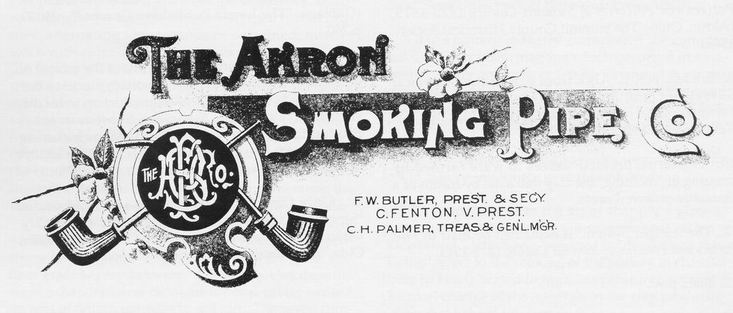
Glazed Wall Tubes
Circa 1895 to 1915
Catalogs showing wall tubes
Go to Photos of Tubes page 1 2 3 4 5 6 7 8
There are many interesting porcelain insulators in the group known as Standard Porcelain. This category is composed primarily of knobs and spools as the direct result of the founding of the Underwriters’ Laboratories, Inc. in 1894 by National Board of Fire Underwriters to formulate safety standards for the industry. Prior to that time, wood was commonly used for house wiring attachments in the form of knobs, cleats, fuse holders, switches, lamp sockets, ceiling rosettes, etc. You can imagine the fire hazard wood posed. Thomas Edison installed the first distribution of electricity in 1882 in New York City. Demand for his new electric light grew rapidly with many homes and buildings becoming wired in the 1880’s and 1890’s. By 1891, insurance companies would not tolerate the use of wooden wiring insulators because of the fire hazard. The new UL fire codes brought an abrupt end to the use of wood and pushed the porcelain industry to the forefront for all electrical uses.
Many small electrical porcelain companies sprung up in the early 1890’s to make wiring insulators. The National Electrical Code was published in 1897, which included standards for electrical porcelain insulators used for “over-surface” wiring. This is common house wiring that ran over rafters and through studs and walls. Initially the code was set up for two-wire cleats and tubes. Then a vast array of standard porcelain in the form of spools and knobs was numbered from 00 to 62. Additional styles were added such as No. 5-1/2 and No. 9-1/2. Any wiring insulator outside the standard styles was referred to as “specialty porcelain”. Many patents cover cleats, tubes, and other specialty porcelain designs. All of this is covered in great detail in Jack Tod’s masterfully researched book, The History of the Electrical Porcelain Industry in the United States. It was published in 1977 and a few copies are still available for purchase (www.r-infinity.com).
Little has been written about one small category of electrical wiring insulators – wall tubes, and, more specifically, “glazed” wall tubes. Most wall tubes were used to safely pass house wiring through rafters, studs, or walls. As stated before, many small companies sprung up to make porcelain wiring insulators. All of these small insulators were glazed, so it was a natural progression to glaze wall tubes. Many of the earliest wall tubes were not actually made of porcelain. They were made from a form of pottery that was inherently brittle. The glaze acted to make the pottery stronger and more durable and also improved the electrical characteristics, which wasn’t all that important for house wiring. Newer massed-produced wall tubes were made of unglazed porcelain and, as such, will not be covered in this discussion in any great detail. Unglazed wall tubes have little or no value to the collector unless a desirable marking is associated with them such as “P&S”. Even then, values remain quite low. Pass & Seymour made the first wall tubes out of porcelain starting around 1892 and continued using this material for many years. Most of the ones I have seen have been unglazed.
One of the earliest if not the first manufactures of glazed wall tubes was the Akron Smoking Pipe Co. (1890-1919) located at 3775 Mogadore Road in Mogadore, OH. It started out as the E. H. Merrill Co., which produced “Ohio stoneware and clay specialties”. On September 3, 1890, the company was incorporated as The Akron Smoking Pipe Co. (ASPCo) with offices on Falor Street in Akron, OH just west of Main Street in the same building as the Diamond Match Co. It controlled the clay smoking pipe business of five other companies with directors who owned the other companies.
ASPCo started making electrical porcelain in the 1895. In 1906, the company manufactured the first third rail insulators used in the U.S., which went to the N.Y. Central Railroad. It produced all the original insulators for the West Shore Line of the same railroad. Akron Smoking Pipe Co. became Mogadore Insulator Co. in 1920 and The Akron Porcelain Co. in 1929 located in Kenmore, OH. In 1984, the company name was changed to The Akron Porcelain & Plastics Co. with plant located on Cory Avenue in Akron, OH. In 1988, they opened a second plant in Barberton, OH and the company is still in business after more than 110 years.

The logo is from the book, A Centennial History Molding a Legacy: The Akron Porcelain & Plastics Co., by Stephen H. Paschen (courtesy of Mike Lewis, Pres.)

The article above was found in the September 2, 1896 issue of The Electrical Engineer
The companies shown below began making electrical porcelain in the 1890’s. Dates are years the company was in business or years at that location.
For a list of insulator
related COMPANIES, click on the link.
Akron Insulator & Marble Co. Akron, OH (1895-1902)
Akron Marble Co. Akron, OH (1893-1894)
American Marble and Toy Mfg. Co. (27 W. Center, Akron; 1891 until fire in 1904)
Akron Smoking Pipe Co., Akron, OH (1890-1920)
Anderson Porcelain Co., East Liverpool, OH (1903-1911)
Brunt & Thompson, East Liverpool, OH (1895-1897)
G. F. Brunt Porcelain Co., East Liverpool, OH (1897-??)
Brunt Tile & Porcelain Co., East Liverpool, OH (1914-1920)
Colonial Insulator Co., Akron, OH (1922-1950’s)
Colonial Sign & Insulator Co., Akron, OH (1904-1922)
Cook Pottery Co. (Etruria Pottery), Trenton, NJ (1904-??)
Diamond Porcelain Co., Trenton, NJ (??-1911)
Electric Porcelain Co., East Liverpool, OH (1901-1911)
Federal Porcelain Co., Carey, OH (1917-1927)
Findlay Electric Porcelain Co., Findlay, OH (1910-1927)
Fred M. Locke (Locke), Victor, NY (1898-1915)
General Electric Co., Schenectady, NY (1892-??)
General Porcelain Co., various cities (1911-1927)
Mogadore Insulator Co., Akron, OH (1920-1928)
Pass & Seymour, Syracuse, NY (1890-??)
R. Thomas & Sons Co., East Liverpool, OH (1884-1927)
Star Porcelain Co., Trenton, NJ (1899-??)
There are many other porcelain companies that made standard porcelain and
specialty porcelain and some of the ones mentioned above may not have made
glazed wall tubes. Other porcelain companies made tubes but they were unglazed porcelain and generally later production. Tubes were sold in a large variety of sizes to suit the need for wall
thickness and wire size. Several patents were granted for improved tube designs and for machines to make tubes.
476,964 (June 14, 1892) Pass & Seymour, tube with projection points
517,591 (April 3, 1894), tube with longitudinal ribs
522,428 (July 3, 1894), tube with metal clip to hold it in place
607,315 (July 12, 1898), tube with a notched split
759,429 (May 10, 1904), machine for forming the heads on pottery or porcelain wall tubes
773,733 (November 1, 1904), tube with ribs and metal clip
870,187 (November 5, 1907), Fred Locke, tube with skirts
878,646 (February 11, 1908), Fred Locke, concentric tubes forming multiple petticoats
912,364 (February 16, 1909), tube for routing wires through wood with spring clip attached to the outside of the tube to prevent the tube from slipping out.
1,080,257 (December 2, 1913), wall tube with metal clip
1,158,105 (October 26, 1915), tube with wedge projections
1,159,798 (November 9, 1915), tubes (insulating) made by winding long strips of paper (machine for making)
1,171,267 (February 8, 1916), wall tube with metal gripping strip
1,206,882 (December 5, 1916), tube with wedge projections
1,342,053 (June 1, 1920), machine for making tubes
1,381,695 (June 14, 1921), machine for making tubes
1,469,584 (October 2, 1923), Federal Porcelain Co., machine for making tubes
1,471,907 (October 23, 1923), R. Thomas & Sons Co, machine for making tubes
Not much is
known about glazed wall tubes because many are unmarked, a cheap item
hidden away in walls for a century or more, and often break during removal.
Glazed pottery tubes were a standard until just after 1900 when
manufactures began to offer unglazed porcelain tubes at a much lower price. Unglazed porcelain tubes were probably easier to make with
new modern machinery and eliminated the troublesome fusing of the glazed tube to
the firing tray and resulting crude-looking irregular glazes that make glazed
tubes attractive for collectors. Porcelain
tubes could be ordered fully glazed, too. The
1902 Central Electric Co. catalog furnished unglazed porcelain tubes and you
could order them glazed for an additional 50% per 100.
A typical unglazed 6” long tube with ˝” opening was $5.44 per 100.
By comparison, the same glazed “clay” (pottery) tube was $34.24 per
100. The difference in cost quickly
moved the customer to the unglazed porcelain tube.
By 1912, Central Electric had quit offering pottery tubes and carried
only standard unglazed porcelain tubes and glazed porcelain tubes for 50% more.
As early as 1903, Brunt offered only unglazed porcelain tubes.
You can easily see why it is not easy to find glazed pottery tubes today
plus the fact that they are more brittle and tend to break when removing from a
wall stud. Pass & Seymour
continued to make both unglazed and glazed (50% more) porcelain tubes and never
made the inferior pottery tubes. They
advertised that you could hammer their tubes in the hole with a wooden mallet.

This advertisement was found in the Electrical
Review dated May 4, 1898. (courtesy of Bob Stahr)
Very few manufacturers have been identified from glazed tubes in my collection. I only know one other person who collects glazed tubes.
The following markings are known on glazed tubes:
A. S. P. CO. (Akron Smoking Pipe Co.) – embossed on either the tube or around the tube below the head (glaze color: brown or white), very uncommon
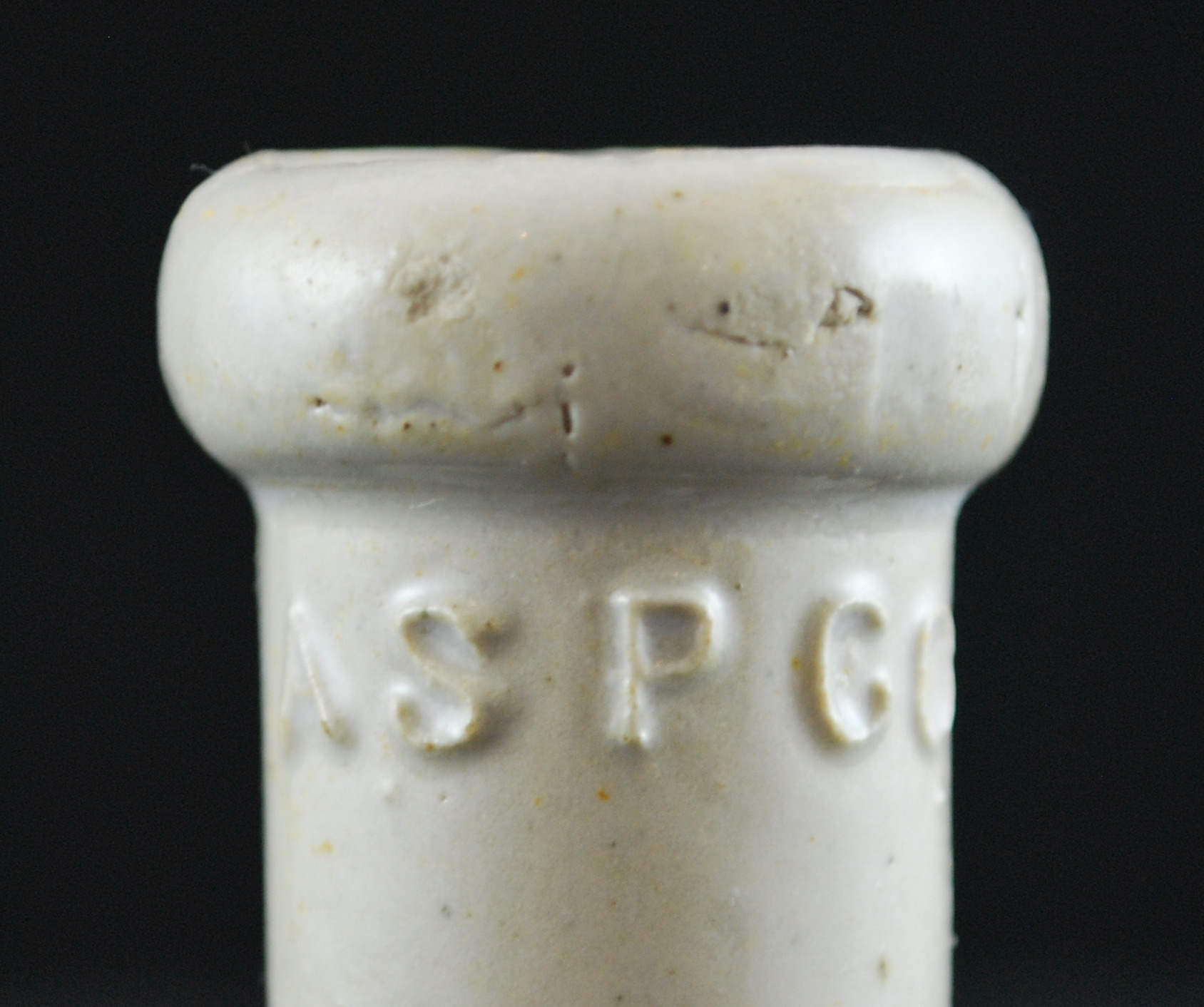
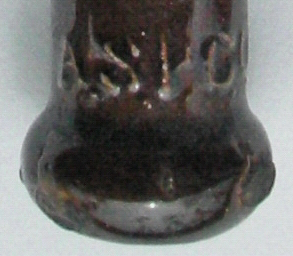

A. I. & M. CO. (Akron Insulator & Marble Co.) – either embossed around the head or incuse on the tube (glaze color: both brown and gray-white)
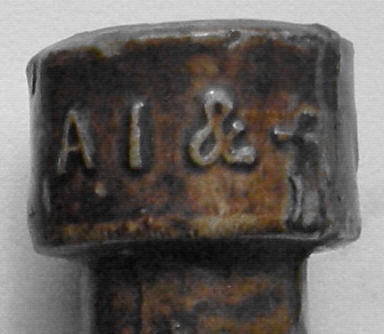


A M (American Marble & Toy Mfg. Co.) – deep incuse marking on end of the head (glaze color: gray-white (rare)

A M C (American Marble & Toy Mfg. Co.) – embossed or incuse on the tube (glaze color: greenish-gray (very uncommon)
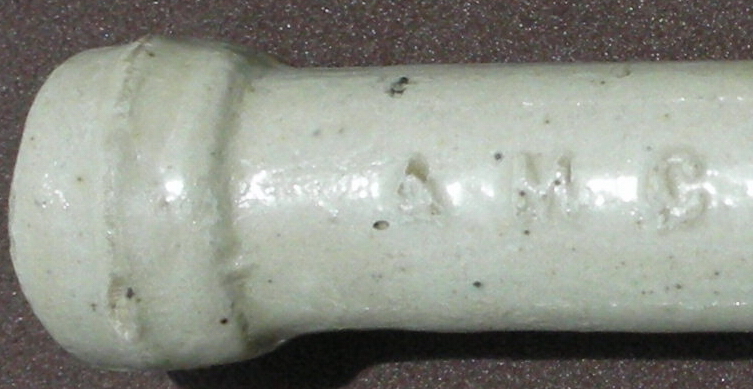
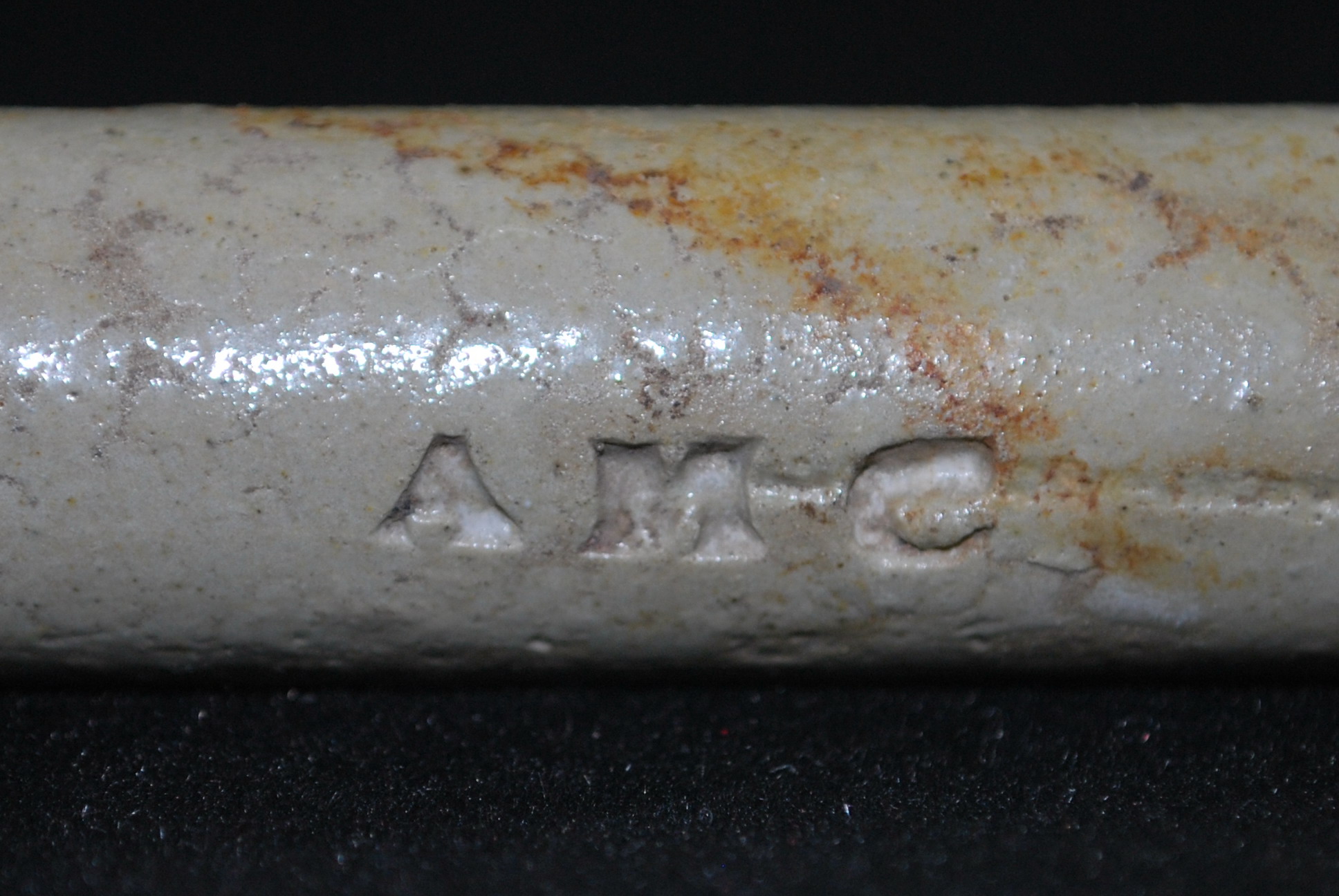
BRUNT (Brunt Porcelain Co.) – incuse marking on the tube (uncommon)
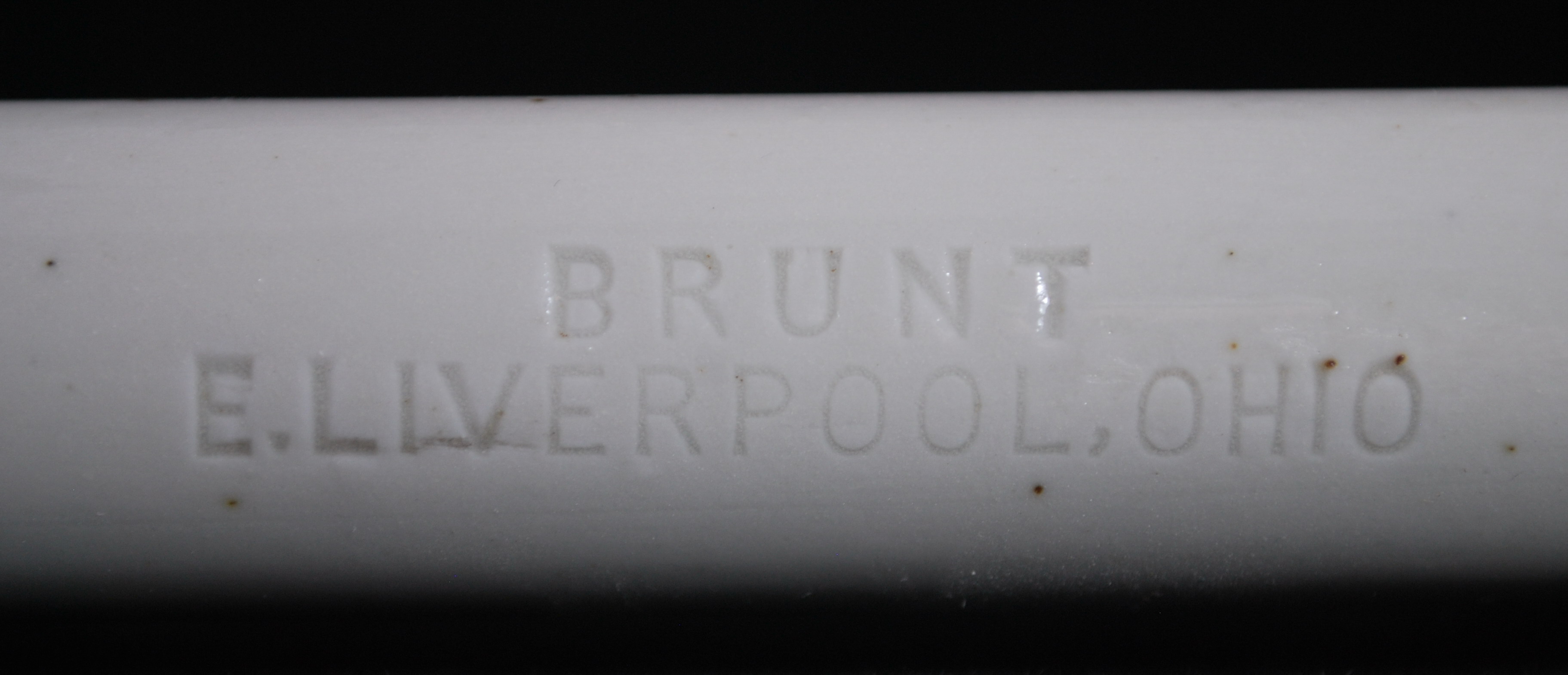
C (maybe Colonial Sign & Insulator Co.) – incuse on the head or on the tube

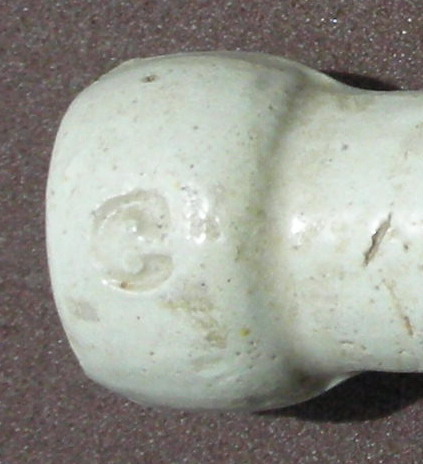
Diamond symbol
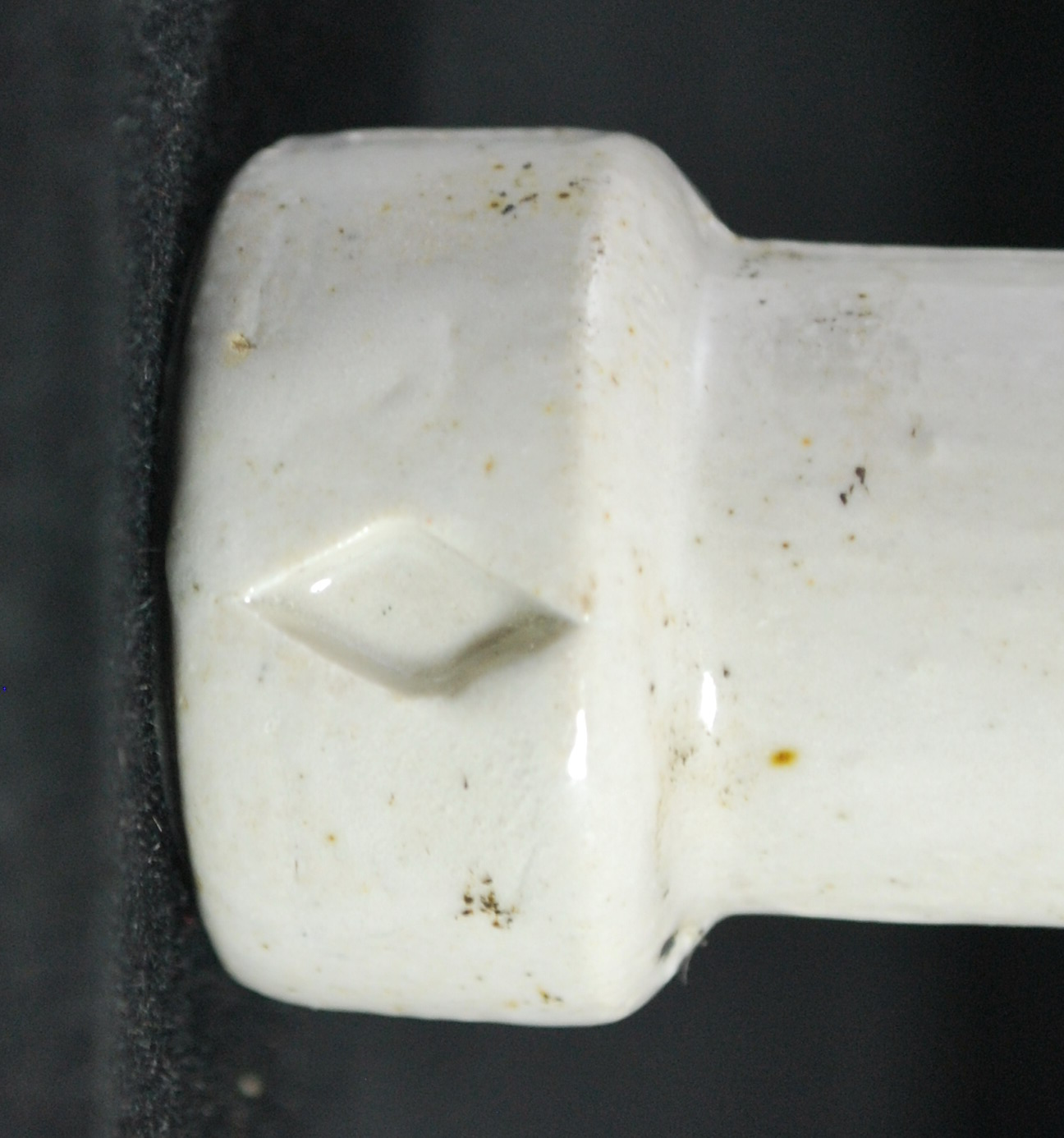

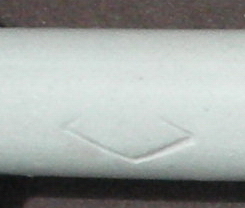
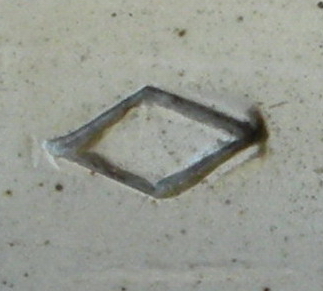
F

G

G
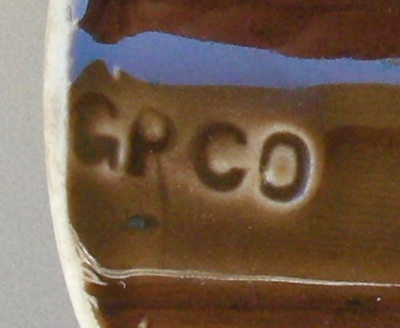
STANDARDŹ (Akron Marble & Insulator Co.) – embossed around the lower edge of the head or incuse on the tube (rare).
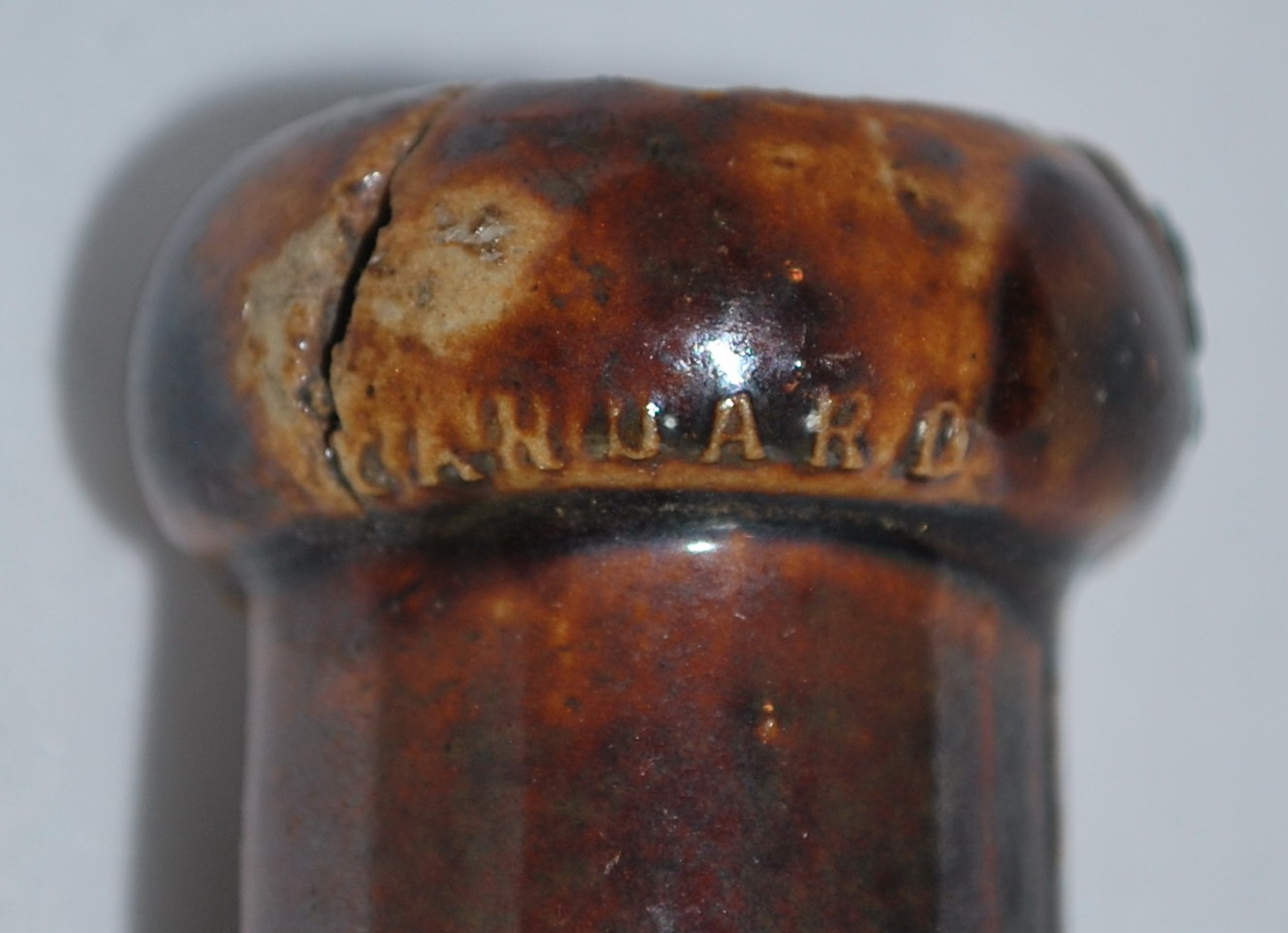
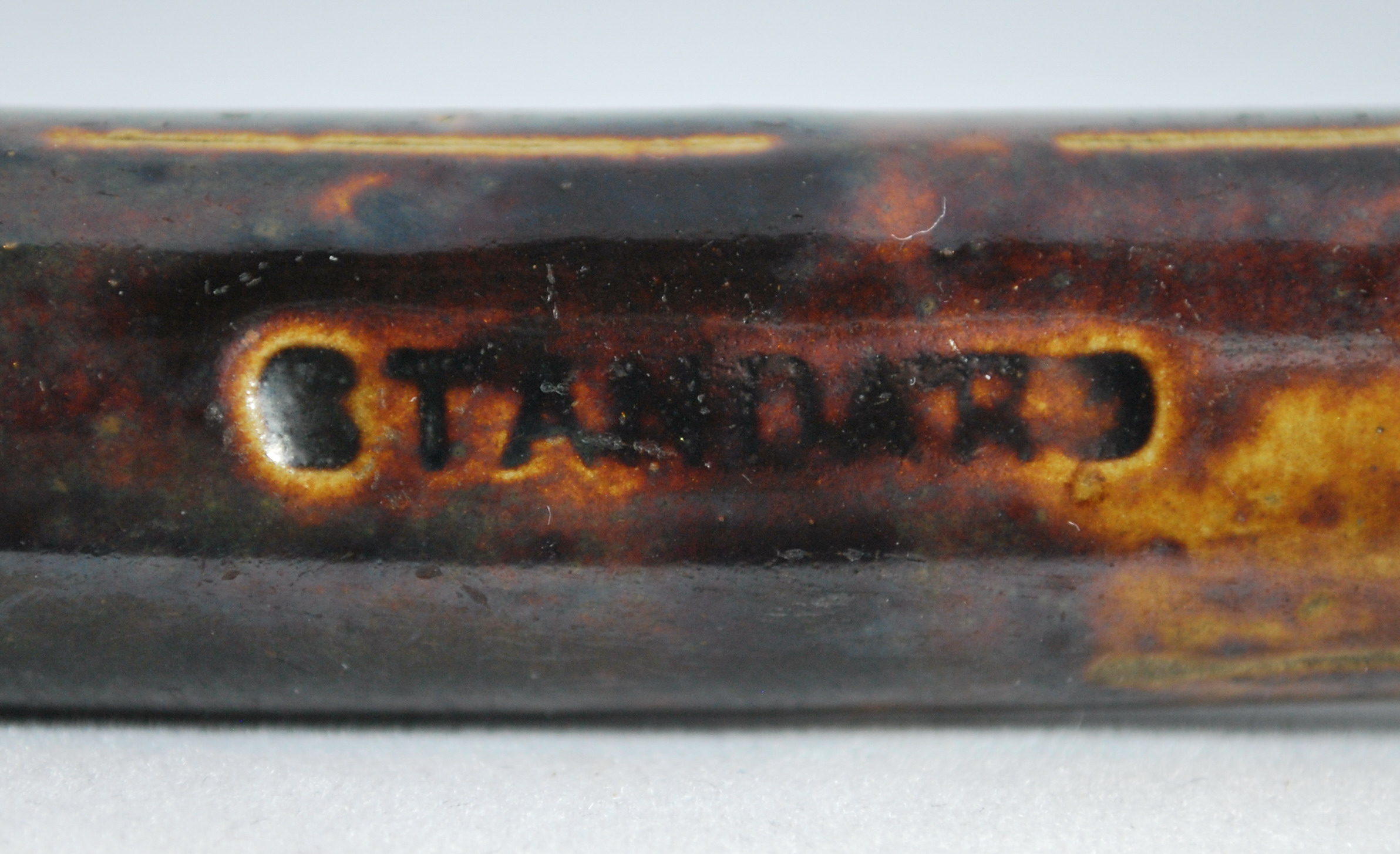
STARŹ (embossed on the head, Akron Marble & Insulator Co.) – do not confuse with incuse Star on the tube (rare).
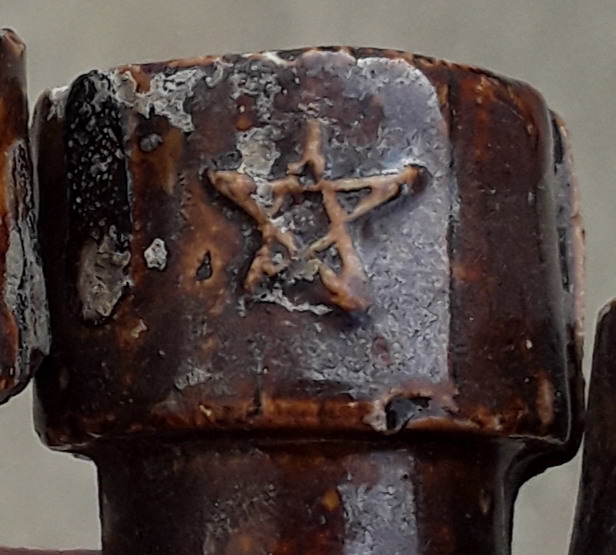
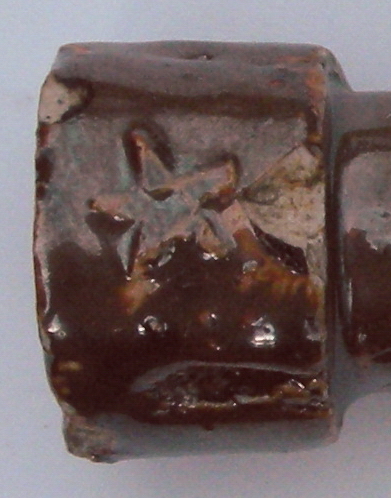
STARŹ (incuse on the tube, unattributed -- rare)

THOMAS (R. Thomas & Sons Co.) – incuse marking on the tube
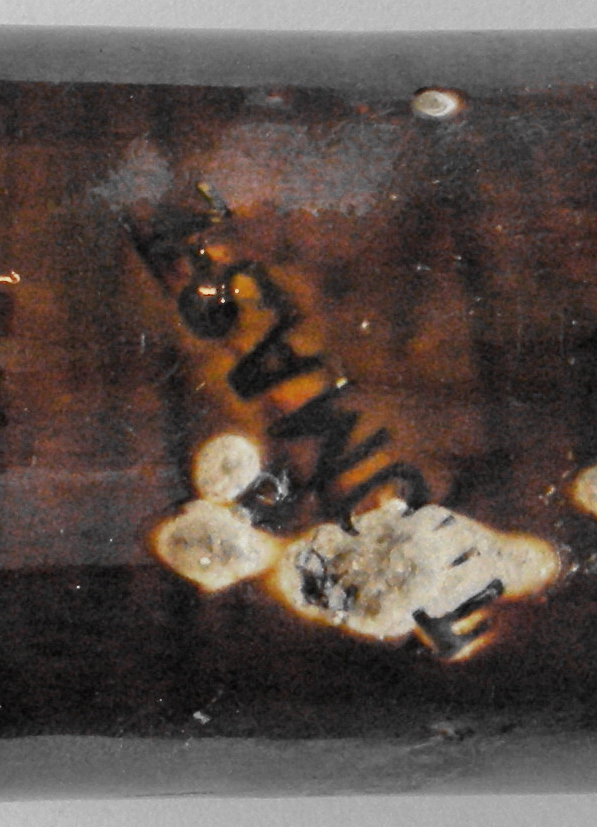
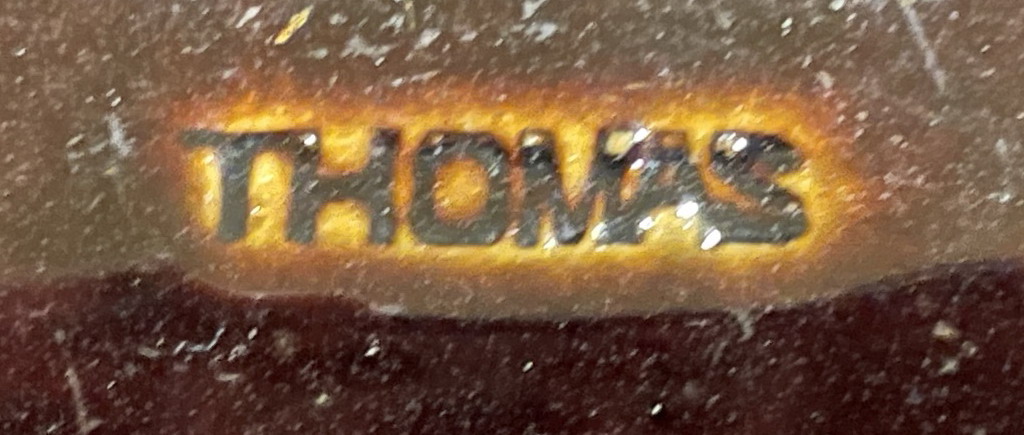
Triangle symbol (unattributed) – incuse marking on the head or the tube
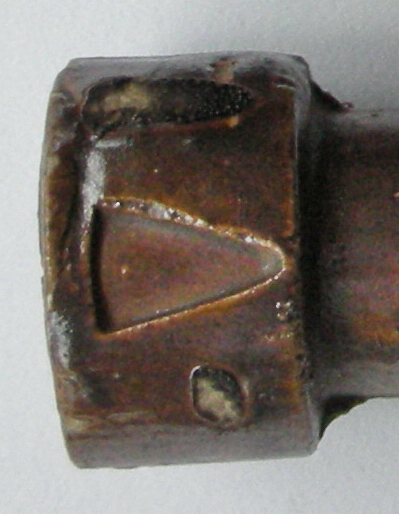
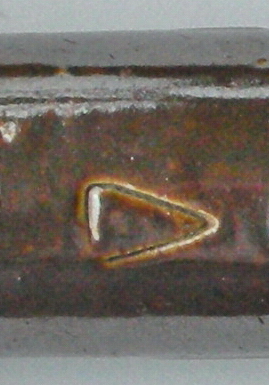
Here are a few markings on unglazed porcelain tubes that are particularly rare or difficult to find:
A. P. CO. (Anderson Porcelain Co.) – incuse marking on the tube
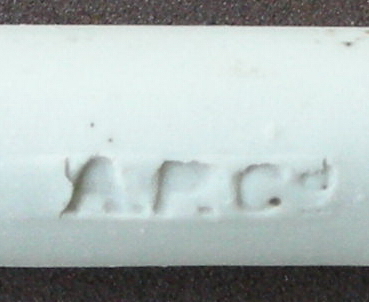
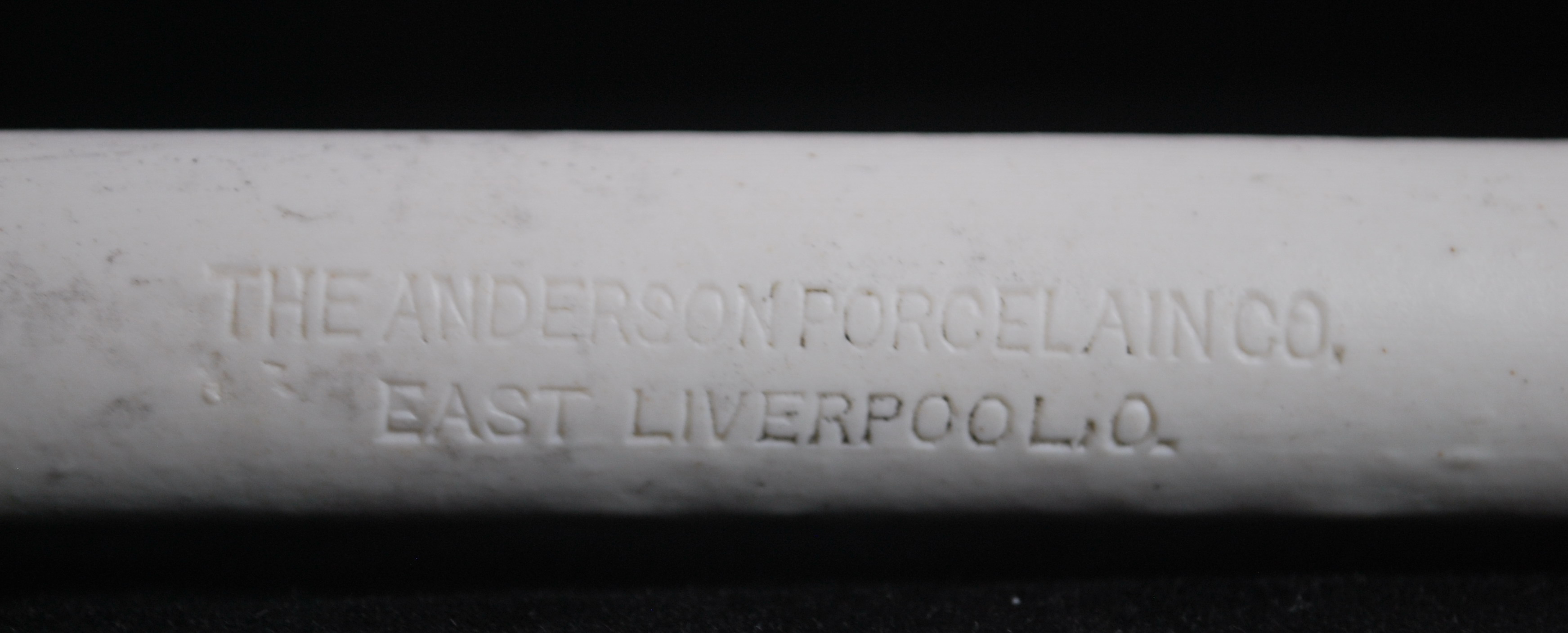
B. & T. (Brunt & Thompson) – incuse marking on the tube (very uncommon)
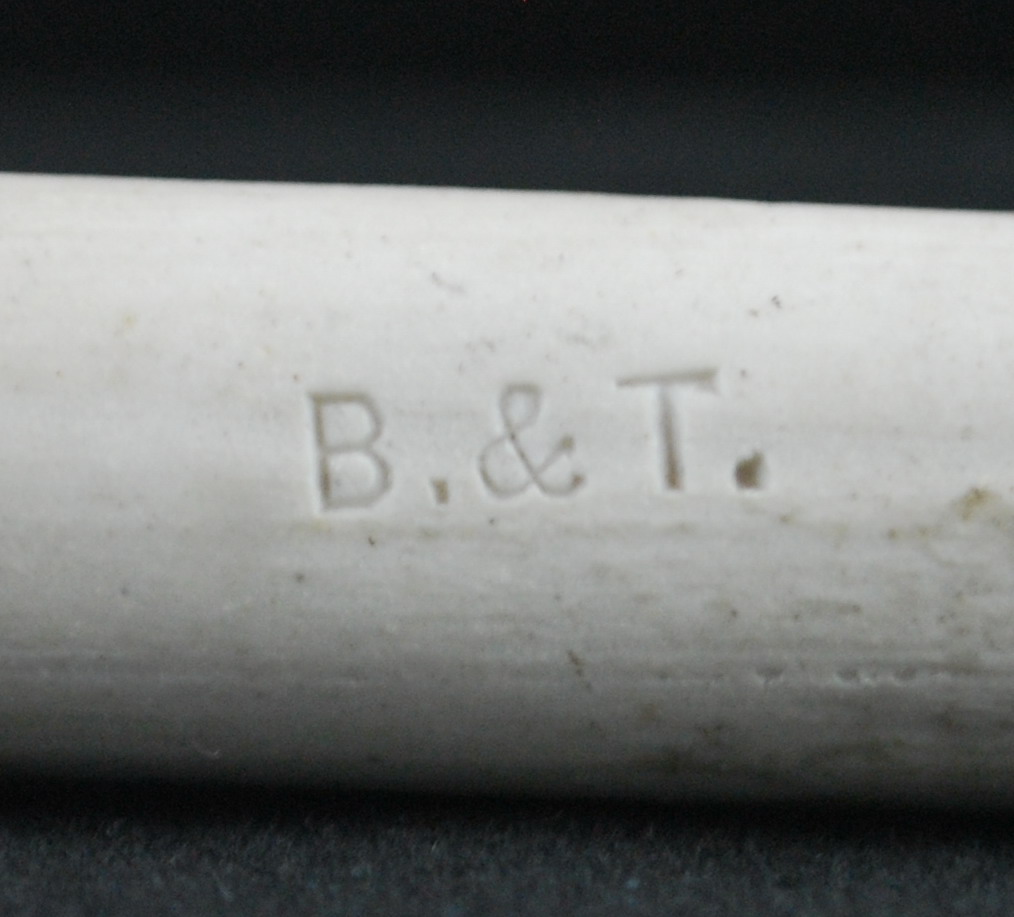
BRUNT (Brunt Porcelain Co.) – incuse marking on the tube
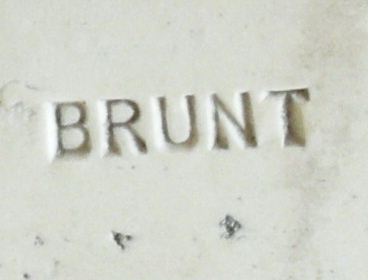
ELECTRICAL PORCELAIN CO. – incuse marking on the tube
E. LIVERPOOL, O.
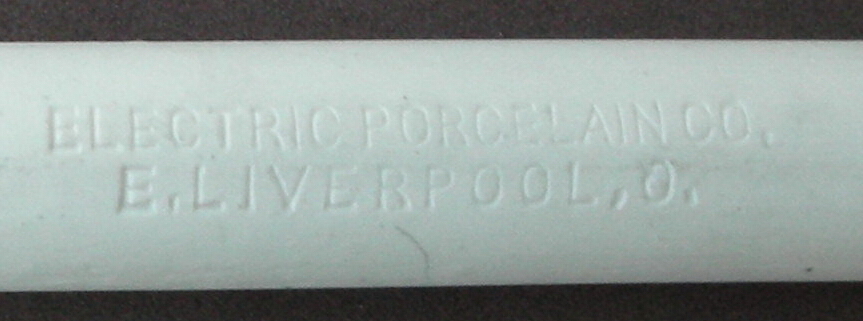

P & S (Pass & Seymour)
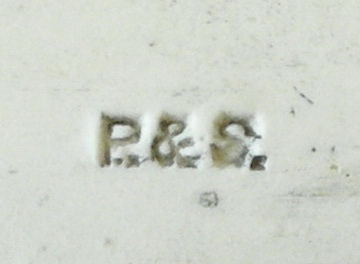
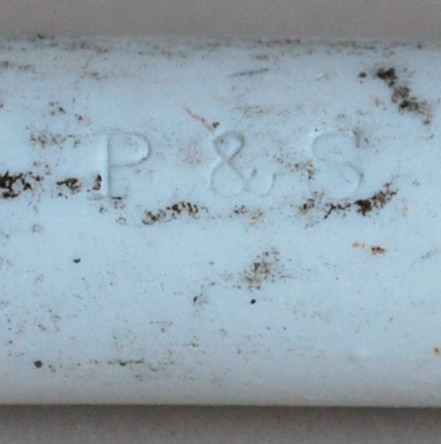
PAT JUNE 14 1892 (Pass & Seymour) – embossed on the tube. The patent is for the raised barbs on the end of the tube to prevent the tube from being withdrawn from the hole drilled in the wall stud or rafter.
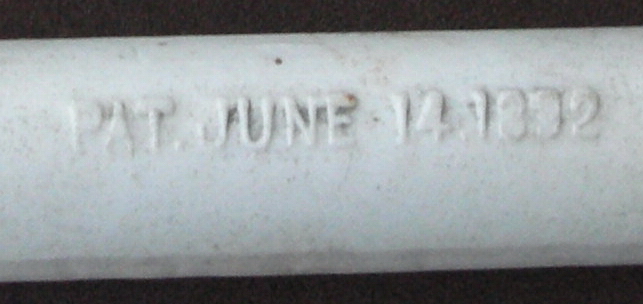
THOMAS (R. Thomas & Sons Co.) – incuse marking on the tube
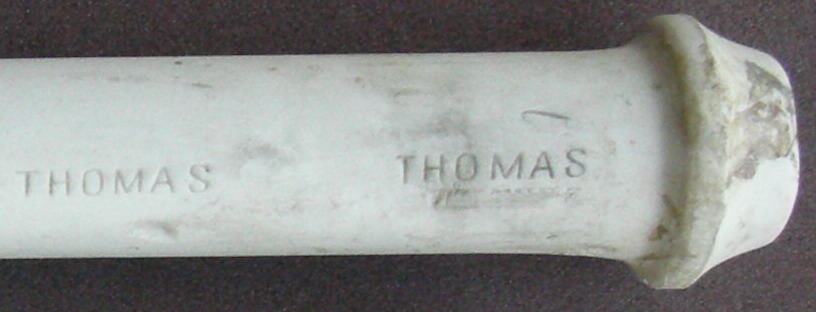
U.S.P.CO. (United States Electric Porcelain Co.) – incuse on the tube
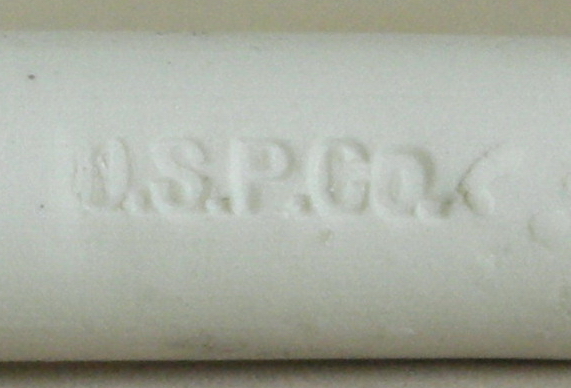
I recently acquired a couple of wall tubes on Ebay that have a characteristic early Thomas glaze mottled with dark mustard color. Imperial Porcelain Works was one of the largest producers of cleats and may have also produced wall tubes. The history of the American Marble & Toy Mfg. Co. and Akron Insulator & Marble Co. is sketchy and confusing at this time, but we do know they made glazed tubes. The site of the American Marble and Toy Mfg. Co. was dug a few years ago and I did acquire a variety of insulators found there including two long tubes (one glazed) with deep incuse mark “A M” on the end of the head and two short unmarked wall tubes with a light blue glaze with sponge-mottled darker blue. AI&MCo was consolidated with the Colonial Sign Co. in 1904 and AM&TMCo burned to the ground in 1904. The two companies were located less than two miles from each other (on opposite sides of IH-76).

A sample of
small porcelain insulators found during a dig at the American Marble & Toy
Mfg. Co. Note that the cleat and
one nail-knob are embossed A.M.C.
I have several brown tubes made by Akron Insulator & Marble Co. embossed with “A. I. & M. Co.” around the square head and one with incuse marking on the tube. There are also a few gray-white glazed tubes embossed “A. M. C.” on the length of the tube, but I have not seen a brown tube with this marking. This marking is attributed to American Marble & Toy Mfg. Co. from various insulators found at the dig.
Most “white” tubes have a glaze color that is either gray-white, off-white, or greenish-gray in color. I have only two pure white glazed pottery tubes. Of all the various sizes of tubes offered in catalogs, there must be many other sizes one could find to add to their collection. I mounted most of my collection on dowel rods fixed to a large board. Tubes can be easily added or rearranged by sliding out the dowel. Below is a photo of this set-up and photos of individual tubes. Often markings are difficult to make out entirely, but if you can see a few of the letters, you should be able to identify the complete marking. Adding a new glazed tube is a slow process, which makes it especially rewarding when you do find one.
A complete listing with photos of known glazed wall tubes in PDF format can be found by clicking at the following link. Note that the file is about 4.5 mb: WALL TUBES link
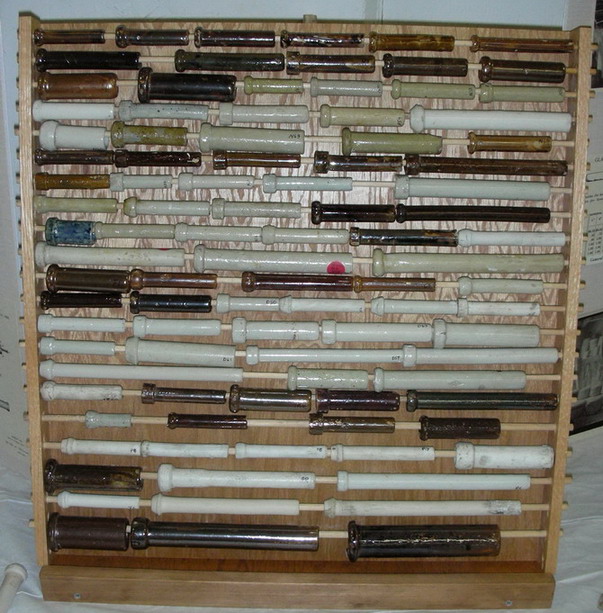
Collection of glazed and hard-to-find unglazed wall tubes mounted on wooden dowels attached to a large board.
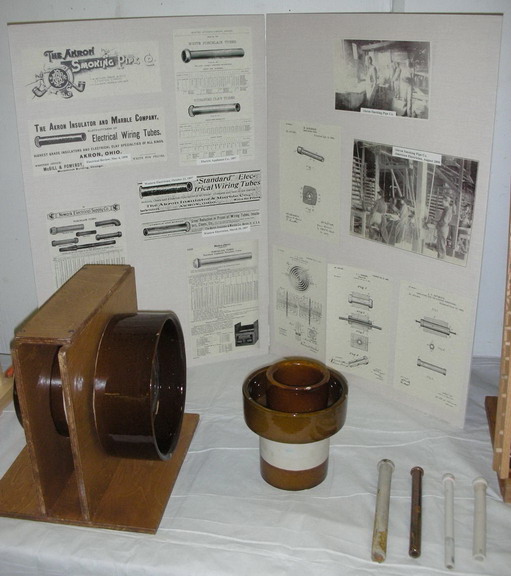
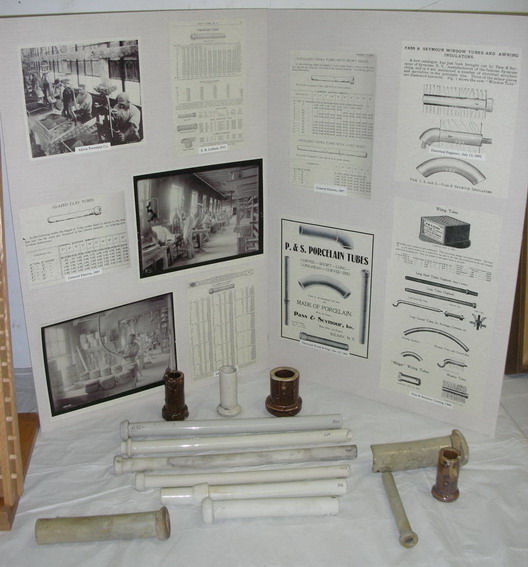
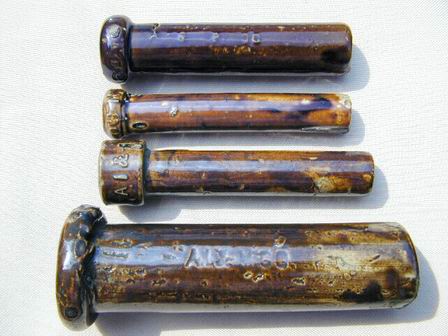
The large tube at bottom has incuse marking “A. I. & M. Co.”. The two above it are embossed with that marking around the head. The tube at the top is embossed “A S P CO” on the tube.
The tube at the top is embossed “A S P CO” around the tube just below the head. The next tube down has an incuse triangle marking. The next two have an incuse diamond marking and the fourth tube is unmarked.
Go to: Page 2
Go to Photos of Tubes page 1 2 3 4 5 6 7 8